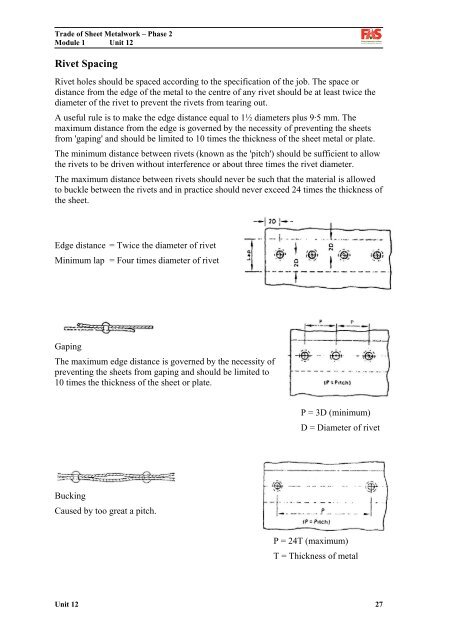Create successful ePaper yourself
Turn your PDF publications into a flip-book with our unique Google optimized e-Paper software.
Trade of Sheet Metalwork – Phase 2<br />
Module 1 Unit 12<br />
Rivet Spacing<br />
Rivet holes should be spaced according to the specification of the job. The space or<br />
distance from the edge of the metal to the centre of any rivet should be at least twice the<br />
diameter of the rivet to prevent the rivets from tearing out.<br />
A useful rule is to make the edge distance equal to 1½ diameters plus 9·5 mm. The<br />
maximum distance from the edge is governed by the necessity of preventing the sheets<br />
from 'gaping' and should be limited to 10 times the thickness of the sheet metal or plate.<br />
The minimum distance between rivets (known as the 'pitch') should be sufficient to allow<br />
the rivets to be driven without interference or about three times the rivet diameter.<br />
The maximum distance between rivets should never be such that the material is allowed<br />
to buckle between the rivets and in practice should never exceed 24 times the thickness of<br />
the sheet.<br />
Edge distance = Twice the diameter of rivet<br />
Minimum lap = Four times diameter of rivet<br />
Gaping<br />
The maximum edge distance is governed by the necessity of<br />
preventing the sheets from gaping and should be limited to<br />
10 times the thickness of the sheet or plate.<br />
Bucking<br />
Caused by too great a pitch.<br />
P = 3D (minimum)<br />
D = Diameter of rivet<br />
P = 24T (maximum)<br />
T = Thickness of metal<br />
Unit 12 27
















